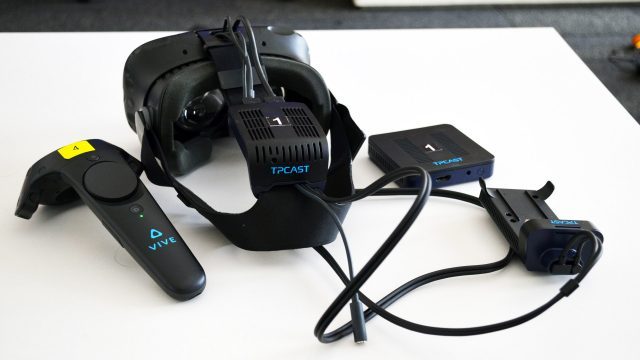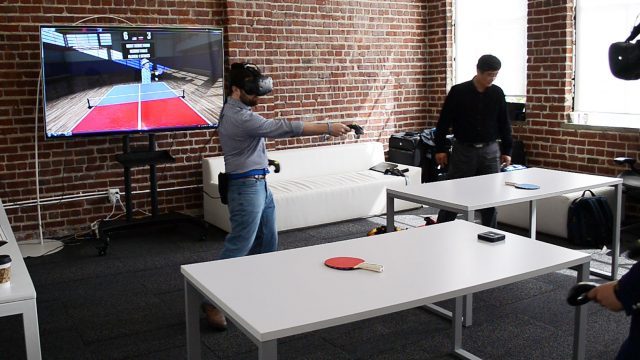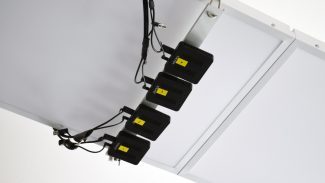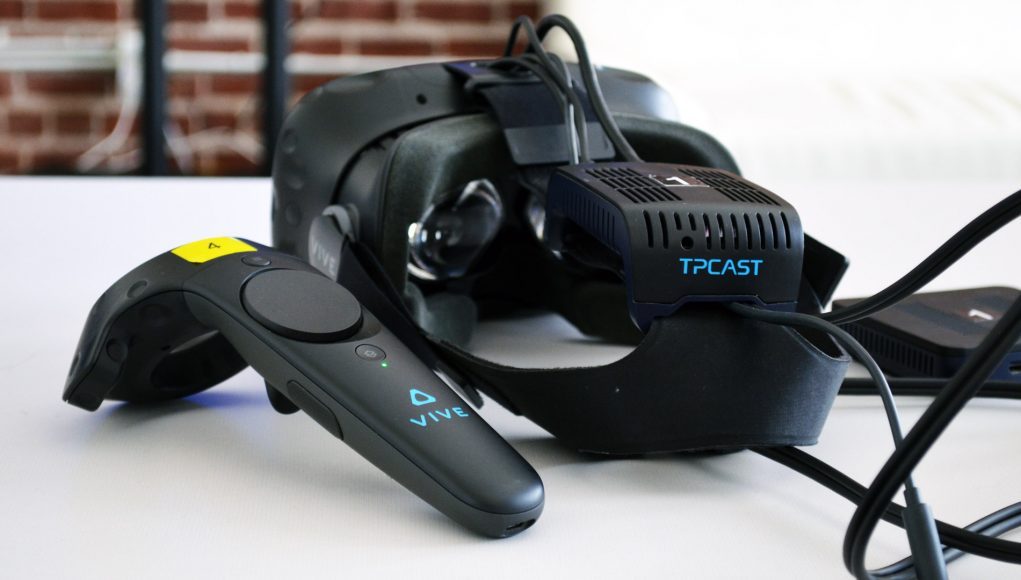TPCAST, makers of a 60GHz wireless VR add-on for the HTC Vive, have announced a Business Edition version of the device which is said to allow up to six of the units to work in one local space without interference.
Tpcast—which is part of HTC’s Vive X accelerator program—has begun shipping what they’re calling the consumer edition of their wireless product in China, which aims to eliminate the cord that connects from the Vive headset to the PC. Now the company is introducing a different version, the Tpcast BE, focused on businesses who want to have multiple wireless VR players in the same local area.
See Also: 5 Companies Aiming to Cut the Cord on High-end VR Headsets
According to the company, the Tpcast BE makes use of on-board channel-management to allow up to six VR users to play wirelessly within arms reach of each other, without interference. Unfortunately you still need one receiver and one transmitter per user (instead of a single transmitter like you’d expect with a home router) though the company says the BE version will be available in packages of four or six units, and with a two year warranty (an extra year over the Tpcast consumer version) the BE is clearly aimed at businesses like out-of-home VR arcades and others that want to use the Vive wirelessly in a commercial setting.

While it’s novel to be able to have multiple wireless VR players in the same local space tracked by one pair of SteamVR Tracking base stations, occlusion problems will become more prevalent. Of course, the Tpcast BE could also be used to enable wireless play on separate player ‘stalls’ that are right near each other, but each tracked with their own base stations.
Hands-on With TPCAST BE

I got to try the Tpcast BE at the Vive X office in San Francisco today where the company was showing up to four wireless Vives running simultaneously with the four corresponding transmitters mounted next to each other on the ceiling.
I slung the Tpcast BE belt around my waist (which holds the battery), and put on my headset. In front of me (in the real and virtual worlds) was another player also wearing the wireless system. Both headsets were sending and receiving information wirelessly to the transmitters on the ceiling which then to the computers on a nearby desk.

The choice of VR app was table tennis in Virtual Sports, which is a great game to demo a wireless Vive with because you don’t have to worry about the headset’s cord getting in the way of your swings or your leaps to go after balls.
Despite very good image quality, in my time playing I saw occasional stuttering inside the headset that seemed to come in no particular pattern. This could have been caused by the PC I was connected to not being up to par in performance, but given that this was the Vive X office, this was probably one of the best places in the world to have confidence that the PC is meeting VR’s recommended specs.
And so my guess is that the stutter was due to the Tpcast wireless transmission, though it could have potentially been an issue with the SteamVR Tracking base stations; when I mentioned the stutter to Tpcast, they were indeed quick to blame the base stations and the room being “too bright,” though I can’t say I would have described the lighting as such. Without a more controlled setting, it’s tough to say exactly which part of the pipeline might have been at fault. I’m looking forward to giving the system a more thorough test in the future.
– – — – –
Tpcast says the BE will be available later this year, though pricing has not been announced. As for the consumer Tpcast wireless kit for Vive which is priced at $250, the company says they have begun shipping in China and plan to bring the product to the US in Q3 this year (a delay from the previously stated Q2 worldwide availability). The present holdup, the company explained, is largely due to pending FCC approvals.







